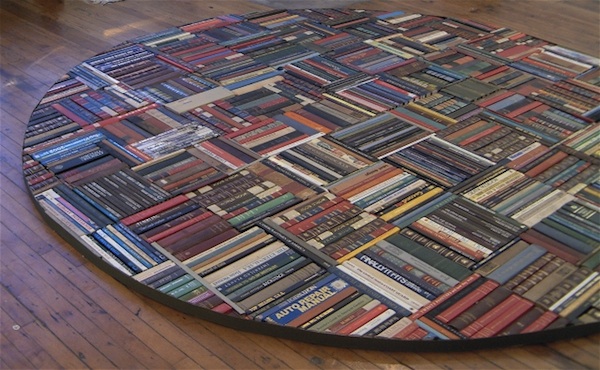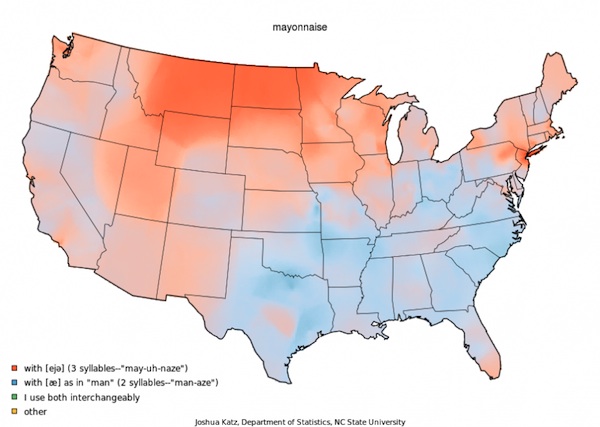Imagine asking a classroom full of elementary school students to draw a scientist. Now try to guess how many of them would sketch a female or homemade brother and sister sex videosmale scientist.
In the decade that spanned 1966 to 1977, teachers across the country gave 4,800 elementary school students this exact task in what became known as the Draw-A-Scientist study. Then a researcher named David Wade Chambers analyzed the drawings. What he found, in 1983, might not surprise you: Only 28 of the children drew a female scientist — and those students were all girls. That amounted to less than one percent of all students.
SEE ALSO: 7 women in science who will inspire you to get serious about STEMRest assured that as times have changed, so have kids' gender stereotypes. A new study published in Child DevelopmentTuesday analyzed dozens of Draw-A-Scientist studies conducted since Chambers' landmark experiment and found that, on average, 28 percent of participants drew a female scientist in the subsequent studies.
 Original image has been replaced. Credit: Mashable
Original image has been replaced. Credit: Mashable With that good news, though, comes one disappointing data point sure to revive debate over why and how gendered stereotypes about science continue to thrive.
"Children are drawing more female scientists than ever before, but they’re still drawing more male scientists as they get older," says David Miller, the study's lead author and a Ph.D. candidate in psychology at Northwestern University.
 Original image has been replaced. Credit: Mashable
Original image has been replaced. Credit: Mashable When Miller first learned about the Draw-A-Scientist study several years ago, he wanted to know if children's stereotypes had changed since the 60s and 70s. Since then, other researchers had conducted dozens of Draw-a-Scientist studies, and Miller had a well-informed hunch that kids would be more likely to draw women.
After all, women earn a significantly higher proportion of science degrees than they did a few decades ago, and they're more frequently represented as scientists in popular culture. Think, for example, of the real-life pioneering female mathematician in the recent film Hidden Figures, the goth female forensic scientist featured on the hit show NCIS, and the (albeit evil) female chemist Doctor Poison in last year's Wonder Woman.
Via GiphyMiller's study analyzed the results of 78 U.S. studies conducted between 1966 and 2016, which collectively included more than 20,000 children attending kindergarten through 12th grade.
Miller and his co-authors found that when children entered kindergarten, around the age of five or six, they drew roughly equal proportions of male and female scientists. But as the kids got older, particularly later in elementary school and in middle school, the share of women dwindled. Miller suspects that shift has to do with children becoming more aware of — and more exposed to — gender stereotypes and perceived cultural norms.
"I think it reflects the environment children are in," Miller says, describing the overall findings. "Women do indeed remain a minority in several science fields. If you look at children’s media, there’s still more male than female scientists depicted. If children are exposed in this environment, we shouldn’t expect them to draw equal numbers of female and male scientists."
 Original image has been replaced. Credit: Mashable
Original image has been replaced. Credit: Mashable While the samples Miller used for the study weren't nationally representative of all American students, the number of children included and the time span help make a persuasive case for kids' evolving views of gender and science.
Miller and his co-authors also analyzed the Draw-A-Scientist studies with and without Chambers' original experiment, which was an outlier because of its size and length. They wanted to determine if that single study disproportionately influenced the outcome of their analysis. When the Chambers study is included in the analysis, the trend toward more female scientists over time is clear. When that study is excluded, the trend still emerges but it's not statistically significant. In other words, the shift during the 1980s and beyond, after Chambers' research was published, is more tentative than clear-cut.
"As scientists we want to fully and accurately present the data," Miller says. "The best way to do that was present results with and without [Chambers' study]. We feel quite comfortable in making the overall claim in change across time."
 Original image has been replaced. Credit: Mashable
Original image has been replaced. Credit: Mashable Sapna Cheryan, an associate professor of psychology at the University of Washington not involved in the study, wasn't surprised by Miller's results. The fact that, on average, more than a quarter of students participating in a Draw-A-Scientist study depicted a woman over the past three decades is heartening progress yet still nowhere close to parity, she says. Indeed, while women have made considerable gains in some STEM fields, they remain drastically underrepresented in others, like physics, engineering, and computer science.
"If you present just a single example of a female scientist and have 'Female Science Day,' that can be easily [seen as] atypical or exceptional."
Cheryan's own research focuses on why gender gaps in STEM participation exist and how to remedy them. She says fiction and nonfiction media representations of scientists must be conscientious about the message they send about who makes a good scientist, and creators must consider who they "prop up" as role models and scientific experts. At the same time, young students need exposure to diverse and inclusive academic environments, where it's clear that girls are welcomed and encouraged to thrive.
Cheryan says it's not enough to provide girls with just a handful of examples; her research shows that female STEM aspirants often want to connect with a potential role model based on a number of factors, not just their gender.
Miller believes that parents and teachers alike need to present children with diverse representations of scientists, making sure to go beyond the "dead, white male scientists" (Newton, Einstein, Galileo) frequently discussed in school. (For a list of historic female scientists, start here.)
"If you present just a single example of a female scientist and have 'Female Science Day,' that can be easily [seen as] atypical or exceptional," says Miller.
Cheryan remains optimistic that stereotypes about who succeeds in science will continue to evolve, particularly given the work of many academics, professionals, and nonprofit groups to create and support a new culture that's inclusive of girls and women.
"I think there is a path forward," Cheryan says. "We will see ... this change in society, and kids' drawings will reflect that, too."
Topics Social Good
 Books on the Floor, and Other News by Sadie Stein
Books on the Floor, and Other News by Sadie Stein
 DoorDash will now process SNAP and EBT online payments
DoorDash will now process SNAP and EBT online payments
 Stone to the Bone: On Ray Harryhausen by Dave Tompkins
Stone to the Bone: On Ray Harryhausen by Dave Tompkins
 Preorder the new Anker Soundcore Sleep A30 earbuds with ANC for $159
Preorder the new Anker Soundcore Sleep A30 earbuds with ANC for $159
 Online hate on a record
Online hate on a record
 Arnold Schwarzenegger's childhood tale ties Trump fervor to Nazism
Arnold Schwarzenegger's childhood tale ties Trump fervor to Nazism
 2 Stories of God: 62 and 70 by Joy Williams
2 Stories of God: 62 and 70 by Joy Williams
 Best Ninja deal: Save $50 on the FrostVault 45QT cooler
Best Ninja deal: Save $50 on the FrostVault 45QT cooler
 You’re Saying It Wrong by Sadie Stein
You’re Saying It Wrong by Sadie Stein
 Draper vs. Kokkinakis 2025 livestream: Watch Australian Open for free
Draper vs. Kokkinakis 2025 livestream: Watch Australian Open for free
 Fighting Words by Sadie Stein
Fighting Words by Sadie Stein
 DoorDash will now process SNAP and EBT online payments
DoorDash will now process SNAP and EBT online payments
 Enttäuschung by Sadie Stein
Enttäuschung by Sadie Stein
 Trump says he represents Pittsburgh, not Paris, but, um, well...
Trump says he represents Pittsburgh, not Paris, but, um, well...
 Aesthetically Speaking by Ivan Brunetti
Aesthetically Speaking by Ivan Brunetti
 Stone to the Bone: On Ray Harryhausen by Dave Tompkins
Stone to the Bone: On Ray Harryhausen by Dave Tompkins
 Photos show stark contrast in police response to Capitol riot vs. Black Lives Matter protests
Photos show stark contrast in police response to Capitol riot vs. Black Lives Matter protests
 NYT Connections hints and answers for January 20: Tips to solve 'Connections' #589.
NYT Connections hints and answers for January 20: Tips to solve 'Connections' #589.
 The Town of Books by Sadie Stein
The Town of Books by Sadie Stein
Charli XCX fans, George finally did the 'Apple' danceIntroducing the Winners of the 2021 Whiting Awards by The Paris ReviewSheri Benning’s “Winter Sleep” by The Paris ReviewStaff Picks: Bars, Balzac, and Buses by The Paris ReviewWhiting Awards 2021: Donnetta Lavinia Grays, DramaStaff Picks: Boulders, Brushstrokes, and Bud Smith by The Paris ReviewHow to watch Purdue vs. PSU basketball without cable: game time, streaming deals, and moreX to become the 'everything app' with a copy of VenmoOh, Heaven by Eloghosa OsundeHow to watch KU vs. OU basketball without cable: game time, streaming deals, and moreThe best deals on space heaters this weekWhiting Awards 2021: Marwa Helal, PoetryMemoir of a Born Polemicist by Vivian Gornick2021 Whiting Awards: Sylvia Khoury, DramaLee Krasner’s Elegant Destructions by The Paris ReviewWalking Liberia with Graham Greene by Lucy ScholesRedux: The Clock Is Ticking by The Paris ReviewFlorida vs. Arkansas basketball livestreams: Game time, streaming deals, and moreThe best deals on space heaters this weekRedux: Montaigne Was Right by The Paris Review This pigeon is way more religious than you'll ever be The AirPop Active+ Halo is a true 'smart mask' for your lungs Twitter suspends over 70,000 QAnon accounts after attack on U.S. Capitol These baby meerkats are here to steal your jaded, jaded heart Parler transfers domain name to Epik, domain registrar of choice for the far right Melania Trump spoke out against bullying and Twitter can't take the irony 'WandaVision' reviews are in. Here's what the critics are saying. Tom Hanks to host 'Celebrating America' Inauguration Day Special COVID derails Musk's plan to shuttle CES attendees in underground Teslas Trump mispronounced 'Namibia' and it's sad but not surprising Toto's 'Wellness Toilet' sounds great. But it's still just a concept. Mark Zuckerberg is gifting as much as $12.8 billion to his own foundation in 2018 Climate scientists harness the power of moms to save the planet Intense video shows workers running for their lives after dam breaks The COVID tech that dominated CES 2021 'Skyrim' player's dating life is literally all of us TCL's Wearable Display will finally be available later this year Taco Bell is bringing back potatoes, rejoice! And they're testing Beyond Meat, too. What to expect from Samsung Galaxy Unpacked 2021 How to watch the Samsung Galaxy Unpacked 2021 event
2.1251s , 10546.7421875 kb
Copyright © 2025 Powered by 【homemade brother and sister sex videos】,Fresh Information Network